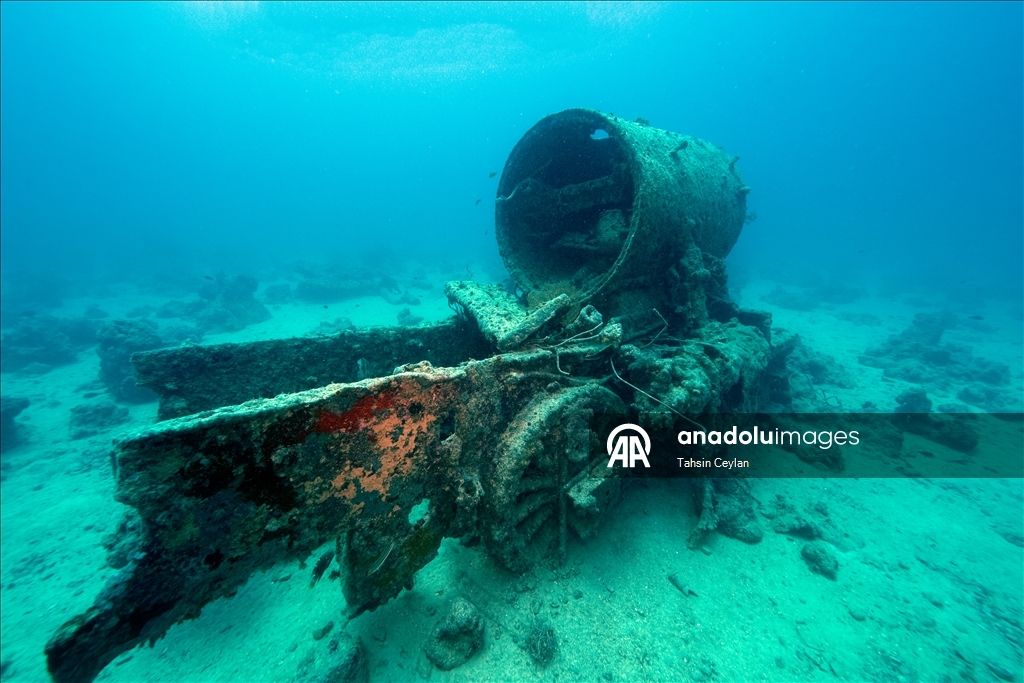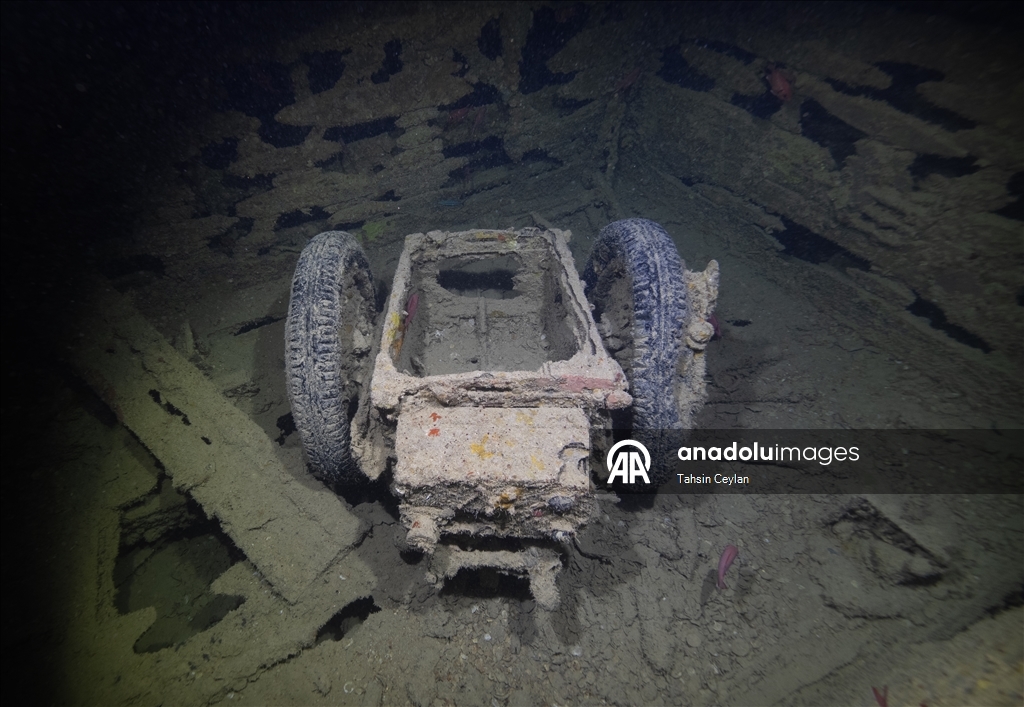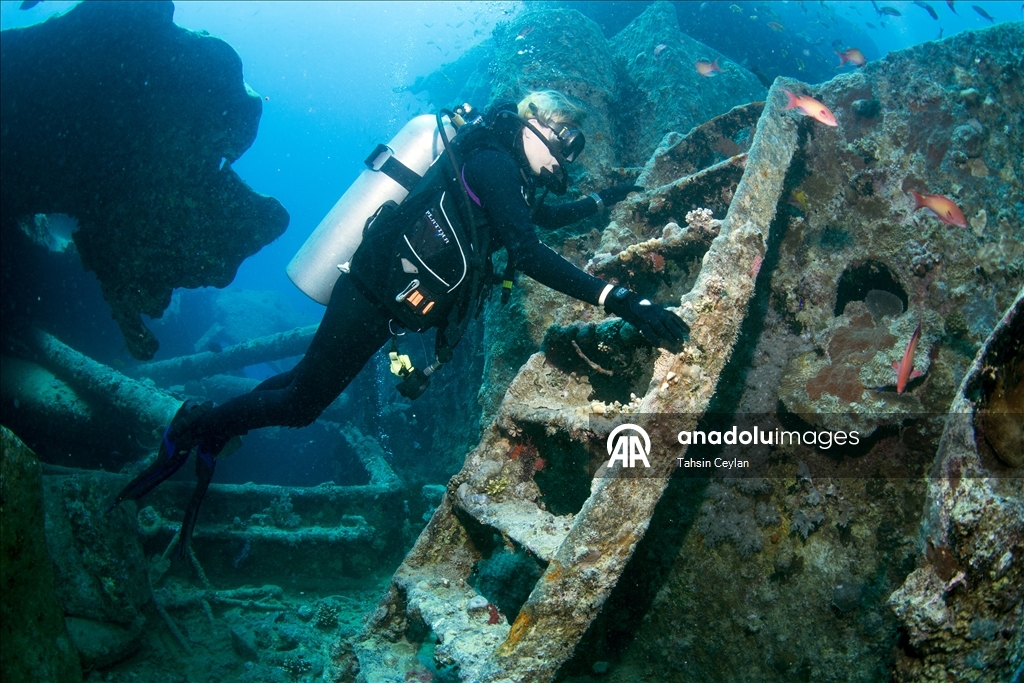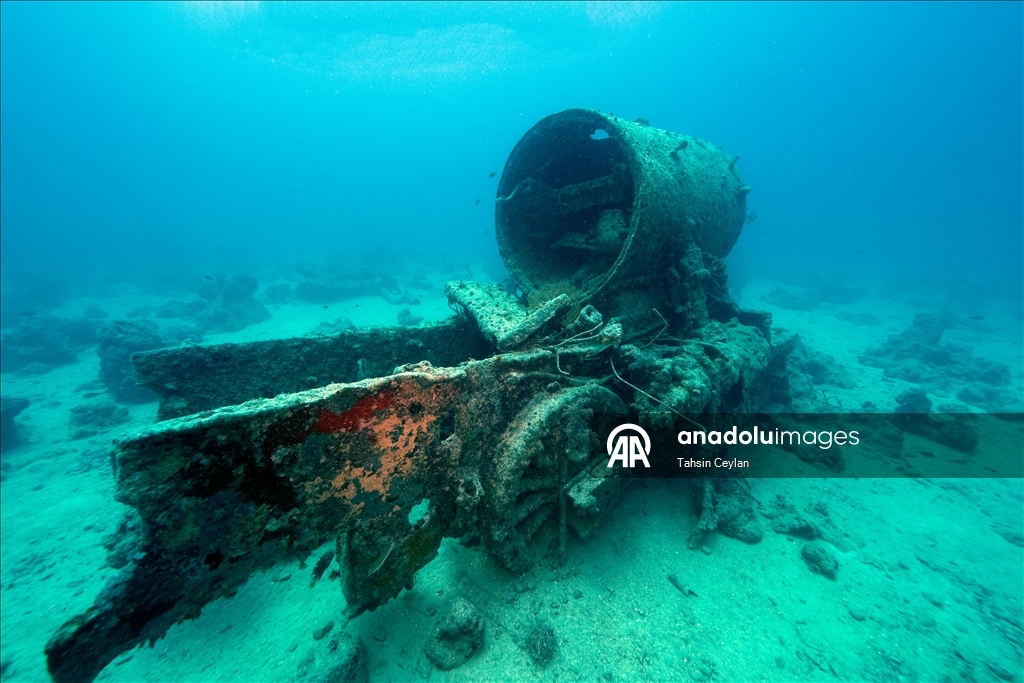 View of the underwater remains of the British cargo ship "Thistlegorm," which was sunk by German aircraft in 1941 after being deployed to transport military supplies from England to Egypt during World War II, in Egypt on September 10, 2025.
View of the underwater remains of the British cargo ship "Thistlegorm," which was sunk by German aircraft in 1941 after being deployed to transport military supplies from England to Egypt during World War II, in Egypt on September 10, 2025.
ISTANBUL
The wreck of the British cargo steamship Thistlegorm, sunk in 1941 during World War II, is more than just a famed diving spot—it’s a submerged museum, a time capsule preserving 84 years of wartime history that lies at the bottom of Egypt’s Red Sea.
Located about 40 kilometers (25 miles) west of Sharm El-Sheikh, the Thistlegorm has become one of the most iconic dive sites in the world, drawing an average of 150 to 200 divers daily.
Footage captured by Anadolu cameras offers a glimpse into the historically haunting yet mesmerizing underwater world the Thistlegorm has become.
Beneath the surface lies a remarkable collection of wartime artifacts: armored vehicles, torpedoes, jeeps, rifles, desert-ready BSA and Norton motorcycles, and even railway wagons. Once destined for Allied forces, these relics now serve as artificial reefs, providing shelter for a rich variety of marine life.
From anti-aircraft guns to motorcycle frames, every nook of the wreck has been claimed by nature.
The schools of orange, yellow, pink, and countless other colorful fish gliding in harmony, along with vibrant corals that now call the Thistlegorm home, showcase the Red Sea’s rich ecosystem.
Here, alongside the wreck’s regulars such as crocodile fish and parrotfish, one could also encounter angelfish and even loggerhead sea turtles (Caretta caretta).
The Thistlegorm, whose crew of 49 included nine high-ranking British officers, set off on its final journey from Glasgow on June 2, 1941, bound for Alexandria, Egypt.
Carrying numerous valuable supplies—including vehicles, trucks, bicycles, aircraft parts, railway wagons, and a locomotive—for delivery to the allies, the ship sank on its fourth and final voyage.
While anchored near the Suez Canal in the early hours of Oct. 6, 1941, the ship was targeted when German bombers that took flight from Crete launched a surprise air raid.
The bombing triggered a rapidly spreading fire, which caused the ammunition stored in the hold to explode. As a result of the blast, the Thistlegorm split in two and sank in less than a minute, settling on the seafloor in a distinctive V-shape at a depth of 32 meters (105 feet).
Five members of the Royal Navy and four sailors lost their lives in the air raid, while the rest of the crew managed to escape before the ship was consumed by flames and water.
The explosion that sank the Thistlegorm, having blown apart most of the ship’s midsection, left the wreck more accessible for divers.
Measuring 130 meters in length and 18 meters in width (427 by 59 feet), the ship was discovered in the early 1950s by famed French marine researcher Jacques-Yves Cousteau.
Despite the find, the site faded from public attention until the 1990s, when Sharm El-Sheikh’s rise as a diving destination brought the Thistlegorm back into the spotlight.
But with popularity has come risk. Despite the growing attention, the Thistlegorm is struggling against the passage of time. The increasing number of divers and boats visiting the wreck is raising concerns about the damage being caused to the shipwreck and its relics.
Anadolu Agency website contains only a portion of the news stories offered to subscribers in the AA News Broadcasting System (HAS), and in summarized form. Please contact us for subscription options.









